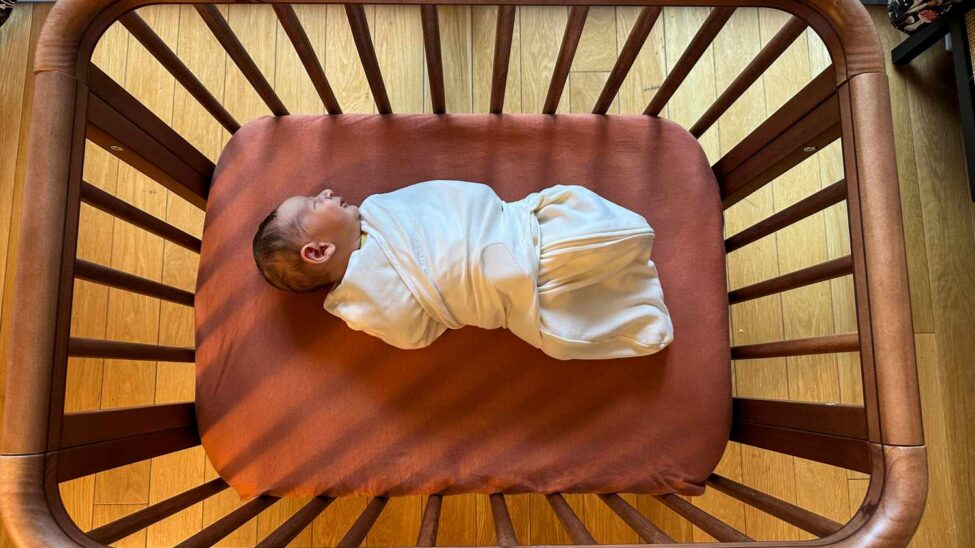
What To Do When Your Crib Ages
Why a worn crib isn’t a parenting fail
Cribs are built to be strong and sturdy, but let’s be real — they’re also used day in, day out. Babies chew on rails, older siblings might climb in for fun, and even the most careful bedtime routine can involve a few bumps and nudges. If your crib starts looking or feeling a little worn, it doesn’t mean you’re doing anything wrong. It just means you’re using it, like any family would.
It’s not about the first scratch. It’s about knowing which scratch matters.
I remember when we noticed the paint peeling on our crib’s top rail. My son had discovered the joys of teething… on furniture. At first, I panicked. But then I realized it wasn’t dangerous — just cosmetic. We covered that area with a silicone rail guard and moved on. No drama, no guilt.
Cribs wear with time, and part of being a parent is figuring out how to tell the difference between harmless signs of life and something that needs attention. That’s where this article comes in.
Signs your crib needs a closer look
There are a few things I check every month — especially after a move, a growth spurt, or when we’ve had a particularly energetic playdate in the nursery. Over time, even small shifts can make a difference in safety. The most common signs of wear aren’t always dramatic:
- Loose bolts or screws that wiggle when touched
- Splinters or rough edges from chipped wood
- Discoloration or flaking paint near the rail
- Squeaks or creaks when rocking or adjusting height
- Visible cracks in slats or the mattress base
If you find one of these, take a breath. It doesn’t always mean you need to toss the whole crib. But it does mean you should slow down and assess what’s going on — before baby’s next nap. One mom I spoke with recently discovered a crack in a slat right after her toddler had started using the crib as a trampoline. She replaced the side panel and added “no jumping” to the bedtime rules. Problem solved — crib saved.
Fix, patch, or say goodbye?
This is the big question: can it be fixed? Some repairs are perfectly reasonable, especially when they’re quick and safe. For instance, tightening screws or replacing hardware with manufacturer-approved parts can make a crib feel brand-new. Minor scratches? A bit of baby-safe touch-up paint can work wonders.
If you’re Googling whether duct tape is okay, the answer is no.
But then there are the red flags. If you find major structural damage — like a broken support beam, multiple cracks, or slats that bend when pressed — that crib has done its job. It’s time to let go. No sentimental attachment is worth risking your child’s safety.
One dad I know tried reinforcing a cracked leg with metal brackets. It held up… until it didn’t. The leg snapped at 3 AM, mid-diaper change. They were lucky it didn’t end worse. Sometimes peace of mind is the best parenting investment.
Making it last: Care tips that actually help
You don’t have to obsess over every part of your crib — but a little regular care can go a long way. Think of it like brushing your teeth: quick, simple, and so worth it.
- Do a monthly checkup for loose parts
- Wipe down surfaces with a damp cloth — no harsh chemicals
- Use crib rail protectors if your baby is teething
- Rotate the mattress occasionally to prevent warping
And if you’ve stored the crib for later use — say, for a sibling — give it a proper once-over before setting it up again. Stored furniture can shift, dry out, or even attract mold if it wasn’t sealed well. I always recommend assembling a stored crib in daylight, with time to spare before it’s needed. That way, there’s no pressure if something turns out to need replacing.
Knowing when it’s time to let go
Sometimes the hardest part of parenting isn’t the work — it’s knowing when to move on. You’ve built memories around that crib. Maybe you rocked your baby through colic in it, or stood next to it for every 2 AM feed. But there comes a point when sentimentality meets reality.
If a crib is outdated (hello, drop-side models), or if repairs are piling up faster than you can keep up, it’s not a failure to part ways. It’s responsibility. And there’s no shame in that. I kept our first crib longer than I should’ve — partly out of love, partly because it felt like the end of an era. But I finally donated it to a local workshop that repurposes wood into toys. A goodbye with purpose.
A crib’s real job is safety — not nostalgia.
Whether you choose to repair, repurpose, or retire your crib, you’re doing what good parents do: caring, deciding, adjusting. That’s the heart of this whole journey, isn’t it?


